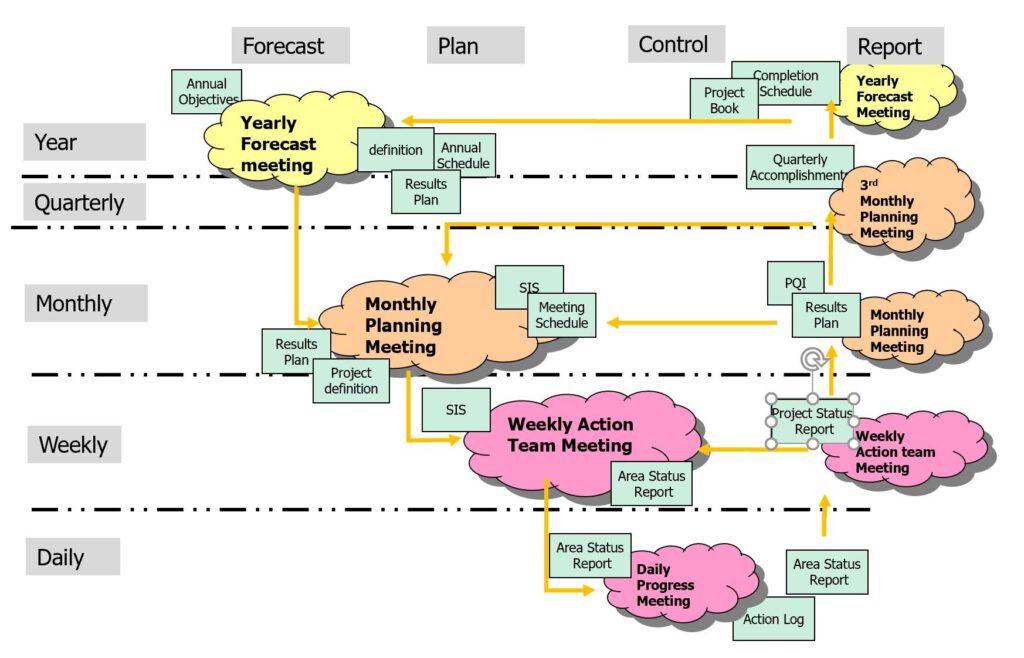
Brief explanation with picture:
From Bottom right to top left, at a daily level, per functional area, a 15-minute meeting, shortly reflect on yesterday´s tasks that were not completed, share actions for that day. Use a whiteboard or action sheet to track progress. Each functional area designates (1) one spokesperson to the weekly meeting, reflecting on last week´s tasks that were not completed (2), and share upcoming week´s tasks. The weekly meeting should be kept to an hour at most. Once a month, the weekly meeting is converted in a monthly meeting, inviting relevant stakeholders (3) besides the spokespersons of the different functional areas, reflecting on last month and sharing upcoming month´s tasks. The monthly meeting may take 1,5 hours. Once every three months, the monthly is converted in a quarterly meeting, inviting relevant stakeholders besides the spokespersons of the different functional areas. At the start, the quarterly meeting may take a little longer, but after a while, should not require more then 1,5 hours either. After three quarterly meetings, the meeting is converted in the yearly forecast meeting, this may be a 2–3-hour meeting.
Each meeting needs to have an agenda, timeslot, a chairperson, notetaker, and timekeeper, the latter two are ´part-time´ roles, which can be done, on a rotational schedule (1), by any of the participants present, but not by the chairman (a), as the focus of the chairperson needs to be on guiding the conversation, driving meaningful conversations, and respectfully stopping unnecessary chitchat.
For this model to work, you need a coach/facilitator to assist in the first couple of weeks for the daily and weekly meetings and support 2-3 of the monthly´s and one of the quarterly´s at a minimum. For the daily´s not so much, but for the weekly´s in the beginning and for the monthly´s for sure, some time will be spent upfront to prepare these meetings and afterwards to get/provide feedback to the participants.
To kick start, you need to present the concept to the participants, and have the supporting documents (meeting purpose, scope, participants, action log, repository) available. During the presentation, the participants can be selected – role based, not person based. In the beginning, and continued if desired, quick feedback at the end of each meeting to verify the effectiveness of the meeting drives focus to the scope of the meeting and is helpful to optimize the meeting, creating desire to attend. This can be a 1-5 or 1-10 scale, whichever is preferred.
- designating a person from the team can be rotational, can also be developmental. In every case, it creates mutual understanding, and appreciation for the work (other) people do.
- There is no need to spend time on everything that was agreed to be completed during the daily review, celebrating can be done in the monthly review.
- Typically, finance, HR, and marketing & sales, join the monthly or quarterly operations meeting.

Leave a Reply